You are here
Descending into Tenaya Canon in Yosemite National Park provides an intimate glimpse of a section of the park that is frequently and literally overlooked. Yosemite National Park is well known for its awe-inspiring granite formations that tower above, crooking the necks of visitors gazing at their immensity and enticing climbers to scale their walls. Lesser known, however, are some of the natural features within the park that beckon from below. One such downward feature is the glacially-carved and water-eroded terrain of Tenaya Canyon, the park's infrequently visited underbelly that connects the floor of Yosemite Valley to the high country by way of Tenaya Creek.
Descent of Tenaya Canyon, while not to be taken lightly, is an exciting, exposed, and endurance-demanding endeavor that offers a level of solitude that can be difficult to find in other areas of the park. The dramatic canyon provides views and unique perspectives on notable park landmarks such as Half Dome, Clouds Rest, the Quarter Domes, and Mount Watkins. The polished granite open expanses of the upper canyon provides striking contrast to the narrow and jagged boulder-lined slot canyon of the Inner Gorge; together the terrain raises the bar on ruggedness found within cross-country terrain that is accessible as a day trip. In summary, this difficult to access landscape is nothing short of spectacular.
Considerations + Safety
Tenaya Canyon holds a reputation as a place that is dangerous and difficult to navigate. Considered by some to be cursed, lives have unfortunately been lost within the canyon, including some in recent accidents. This curse dates back to Chief Tenaya, leader of the Ahwanheechee people. During the Gold Rush, the Ahwanheechee were evading forced deportation from Yosemite Valley to reservation lands by white settlers when Chief Tenaya’s youngest son was shot and killed. As a result, Tenaya is said to have sent a curse that left Tenaya Canyon and other areas of Yosemite Valley haunted.
Whether it’s due to a curse or the challenging terrain, suffice it to say that casual hikers should not set out to explore Tenaya Canyon. As a deterrent, the National Park Service has placed signs at the mouth of the canyon warning unprepared visitors against venturing further down Tenaya Creek’s exposed terrain. In Chapter 2 of his book Steep Trails, John Muir himself wrote about taking a terrifying fall here as he explored the canyon in 1873, a fall that knocked him unconscious and flirting with a life-threatening encounter.
The descent down Tenaya Canyon is a technical canyoneering route (given a rating of 3B IV, three stars, by the ACA) that requires critical route finding, use of climbing gear, creek and pool fording, and multiple rappels.
The route drops approximately 4,200 feet over 10 miles, the majority of which runs cross-country/off-trail and encounters creek crossings, talus fields, steep exposed granite slabs, bush-whacking, boulder-lined gorges, slick/wet rock, and precipitous cliffs along the way. Minimum gear requirements include a 60-meter rope, a helmet, webbing for back-up anchors, a climbing harness, carabiners and a rappel device, prusiks, and the usual backcountry gear: first-aid kit, headlamp, clothing, and food and water for such a journey.
Four drop-offs ranging from 30 to 70 feet, each equipped with rappel anchors (anchors were in place and in good shape at the time of writing), are encountered within the inner gorge section of the route. Depending on skill level and water flow, some rappels may be downclimbable with exposure, but given that parties will be carrying a rope and that Tenaya Canyon is a remote location where you don’t want to get hurt, rappelling is often the safer option. In the event anchors are found damaged or missing, make sure to carry extra webbing so you are able to set your own rappel anchors if needed.
The ACA rating details the route as taking one long day; experienced canyoneers/backcountry travellers should be able to complete the route in 10-11 hours. Parties looking to do the descent in one day should start out around dawn and plan on finishing near dark. With Tenaya Creek running the length of the canyon, the route is more easily navigated when water flows are low, toward the end of summer and early fall. With spring and early summer flows, descending Tenaya Canyon is exceedingly more dangerous. Descents should be avoided during this time.
Bring plenty of water, a water filter, and/or water purification tablets for water resupply. The route is exposed to strong Sierra sun and can get exceedingly hot during late summer/early fall days.
Tenaya Canyon is also an ecologically sensitive area that needs your help to keep it pristine. A healthy rattlesnake population occupies the canyon as do a multitude of other speices. If traveling through the canyon please make sure to practice Leave no Trace principles, pack out all human waste and pick up any trash you see, even if not your own.
Logistics
Setting up a car shuttle is the most practical way to facilitate a Tenaya Canyon descent. Shuttles should be organized the night before, leaving a car at Trailhead Parking located between Curry Village and the Happy Isles Trailhead on the valley floor adjacent to Upper Pines Campground. Choose a convenient campground to overnight relatively close to the Sunrise/Clouds Rest Trailhead (the starting point), which is located near the west end of Tenaya Lake along Tioga Road/Highway 120. Camping closer to the trailhead will reduce pre-dawn driving time. Good campground options include Crane Flat, White Wolf, Porcupine Flat (no potable water), and Tuolumne Meadows Campground. Campground reservations are recommended for Crane Flat, White Wolf and Tuolumne Meadows.
Upon finishing the route at the Mirror Lake Trailhead, catch one of the free Yosemite Valley shuttles at shuttle stop 17 along Happy Isles Loop Road to get back to your car at Trailhead Parking; get off at shuttle Stop 15 for Upper Pines Campground. Shuttles run every 10-20 minutes. Alternatively, you can walk a mile back to Trailhead Parking from the Mirror Lake Trailhead.
Day trippers completing the descent should have campground/accommodations taken care of beforehand. You'll likely be tired, it will be getting late, and you won't want to hassle with accommodations in what can be a busy national park.
Guided trips down Tenaya Canyon are also available.
Upper Canyon - Sunrise/Clouds Rest Trailhead to Lone Boulder (8,170 ft - 7,735 ft; 3.5 miles)
The upper section of Tenaya Canyon, which covers the 3.5 miles beginning at Sunrise/Clouds Rest Trailhead and extends to the navigational marker referred to as Lone Boulder, is relatively tame terrain compared to the steep slabs and gorge that lie ahead. While off-trail beyond the first half-mile, the downhill portions of the upper canyon are mild and the talus field and boulder-hopping is minimal. The key to this section is locating the Lone Boulder while descending the upper granite bowl. This is the navigational aid that positions parties for the more critical route-finding that lies ahead.
From the trailhead, follow the Sunrise/Cloudrest Trail over Tenaya Creek, which flows from Tenaya Lake for a few hundred yards east. At approximately the half-mile mark, leave the trail and follow Tenaya Ceek downstream. This is the end of the established trail until you link up with the Mirror Lake Loop at the other side of the canyon. In low water years or late in the season the creek bed may be dry, but it is still easily discernable. Follow the creek downstream while navigating through lodge pole forest and crossing various flat granite slabs. Continuing downstream, look for a granite ridge rising to the west (right side), framing the stream bed.
The streambed will begin to narrow, and shortly thereafter parties will encounter a National Park Service sign around 1.5 miles from the trailhead. The sign warns unprepared hikers to return to Tioga Road. Beyond the sign is the drop into the upper granite bowl, a massive polished sloping slab that marks the canyon proper. Drop into the bowl trending left for the easiest grade down, staying clear of wet and slick rock from Tenaya Creek when water is running. The ridge rising on the left continues toward Clouds Rest. The first views of Half Dome open to the west, and these remain a constant landmark throughout the descent. Continue down to the forested valley found at the bottom of the upper granite bowl.
While descending the bowl, carefully note the location of Lone Boulder, which sits on the adjacent low-lying ridge to the west and beyond the forested valley floor. Lone Boulder will drop out of view once while you are in the forested valley, but keep its location in mind as you’ll need to continue navigating toward it.
At the bottom of the Upper Granite Bowl continue following Teyaya Creek, staying to the right for easier navigation through the forest. Beyond the forest you'll find more flat rock slabs that you’ll need to cross, in addition to Tenaya Creek, to gain the ridge and Lone Boulder. Leave Tenaya Creek beyond the forest (beginning the baypass of Plywiack Cascade) and gain the adjacent low-lying ridge on the left side of the canyon by climbing up a short talus field and low angle rock slabs en route to Lone Boulder. NOTE: Do not attempt to descend the canyon by following Tenaya Creek beyond the forested valley. Make sure to break off from Tenaya Creek and head south, climbing the ridge toward Lone Boulder well before the creek funnels and drops over the 1,000-foot Pywiack Cascade.
Steep Rock Slab Descent + Lost Valley (7,735 ft - 6,100 ft; 1.5 miles)
By navigating to Lone Boulder, parties will bypass the dangerous and heavily exposed section of Pywiack Cascade and proceed down the safest route to reconnect with Tenaya Creek in Lost Valley below. The route followed here, while still steep, should be navigable without the need to place anchors and rappel, although some parties may find it safer to do so.
From Lone Boulder, descend down the talus field toward a continuous brushline running upslope. Bushwhack through the brushline and aim for a second and smaller patch of brush lying beyond a shorter talus field. Below this second patch of bush the talus becomes solid rock slab and marks the 700-foot, fourth-class descent line parties should take.
From the second patch of brush referenced above, descend downhill and aim for a solitary fir tree standing tall below and in line with the rock slab descent. From here parties should be able to visually discern the optimal descent and avoid any unexpected drops or steepening of slabs. The descent route stays among small patches of brush growing out of the slab that can be helpful for use as handholds. In addition to the brush, the route follows a slight rise in the rock that is oriented vertically and that sits slightly higher than the surrounding slab. Take care not to venture far off of this prominence, for the surrounding slab steepens considerably. Toward the bottom of the slab, parties will encounter a large patch of brush, again requiring some bushwhacking. Proceed down through the bush and talus field to the large standalone fir tree that was identified from the top of the rock slab.
With the rock slab descent behind you, identify a navigable route down to the canyon floor. Stay to the left of the creek and another sloping cascade that spills into a picturesque pool and a great place for a rest and a swim. Ensure you have plenty of water before continuing on.
Continue following Tenaya Creek downstream to the second forested valley, fittingly named Lost Valley as it lies in the difficult terrain between Pywiack Cascade and the Inner Gorge. Soak up Lost Valley’s shade and serenity; the going gets rough again after the forest.
The Inner Gorge (6,100 ft - 5,300 ft, 0.75 miles)
Beyond Lost Valley the canyon forms a narrow “V” as it drops gradually toward the Inner Gorge. The streambed here consists of car- and van-sized boulders, with boulder-hopping and scrambling the norm. Proceed down the creek, staying to the right for easiest navigation. Approximately 5 miles from the trailhead the walls of the canyon narrow suddenly and drop into the dramatic slot-lined canyon of the Inner Gorge. The Inner Gorge is relatively short in terms of distance, but due to the extremely rugged terrain and four rappels, progress will be slow-going.
Upon approaching the gorge, identify a series of ledges on the right-hand side that extend out and parallel the canyon. The lower ledge marks the location of the first rappel. Follow the lower ledge out a few hundred feet as you keep an eye out for rappel anchors fixed with bolts and rappel rings on the right side of the ledge. This first rappel drops 45 feet into the Inner Gorge.
Continue following the slot canyon downstream, navigating the boulders that make up the streambed. Shortly thereafter, the down canyon view aligns again with Half Dome before reaching a 30-foot drop, the location of Leconte Boulder. The house-sized boulder is the site of the second rappel, rapping down a waterfall into a crystal clear pool below. The rappel anchor is located on the right side of the canyon on a rock shelf adjacent to Leconte Boulder, fixed with webbing. The rappel is wet and slick. Both the waterfall and pool waiting below provide another welcome cool-off in hot weather. At the bottom of the rap, wade through the pool and continue west down-canyon.
Following the second rappel the slot canyon opens up shortly to a phenomenal view. The going again gets rough as you drop down in elevation beyond Leconte Boulder, requiring more boulder-hopping and down-climbing through a noticeably rugged section. Stay right above the streambed where navigation is easier, passing over large rock slabs intermixed with boulders and some bushwacking until you get around this section.
Return to the streambed where it flattens, and remain on the lookout for a small keyhole tunnel in a group of large boulders that appear to form a barrier in the canyon. The keyhole is located on the right side of the streambed and allows for passage and continuation along the route below.
Beyond the keyhole, more boulder-hopping leads to another set of ledges on the right hand side with the gorge dropping to the left. Tenaya Creek flows over a waterfall slightly upstream. Continue out along the ledge as you look for another set of bolted anchors and the third rappel point that drops 70 feet to the gorge below.
Beyond the third rappel is another small waterfall that can be downclimbed through an opening on the right side employing the handholds along the canyon wall. Downstream of this downclimb are a series of beautiful pools, a nice rest spot that is easily navigated around. Beyond the pools is a sloping 40-foot rock face and the location of the fourth rappel. Using the anchors located at the top of the sloping rock on the right side of the slot canyon, rap over a deep pothole feature in the middle of the rock down to another clear pool below. After this rap you can store your rope, as you will not be needing it from here on out.
Beyond the fourth rappel, the narrow Inner Gorge continues for a short distance and elicits its last bit of downclimbing and boulder-hopping. Without much transition or warning, the Inner Gorge spits you out, revealing the broad lower canyon that passes below the Quarter Domes, Mount Watkins, and magnificent Half Dome.
Lower Canyon - Exit of Inner Gorge to Mirror Lake Trailhead (5,300 ft - 4,000 ft; 4.25 miles)
Upon emerging from the Inner Gorge approximately 5.75 miles from the trailhead, continue down the streambed and keep right where the creek splits. The terrain of the lower canyon remains challenging and rugged. With over 4 miles of ground yet to cover, this is by no means an easy section of the descent. The going becomes easier only once the Mirror Lake Loop Trail is reached.
Continue staying right, remaining in the forest above the eroded banks of the creek. Staying along the north side of the canyon will eventually link you with use trails, of which there are multiple. The use trails connect to the Mirror Lake Loop Trail at a footbridge that crosses Tenaya Creek, approximately 7.75 miles from the start. Follow the Mirror Lake Loop Trail back to the Mirror Lake Trailhead at its intersection with the Happy Isles Loop Road. From here you can catch the free valley shuttle (shuttle stop 17) or walk back to your car at Trailhead Parking. Take a moment to congratulate yourself on descending through Tenaya Canyon, a truly unique adventure in Yosemite National Park.

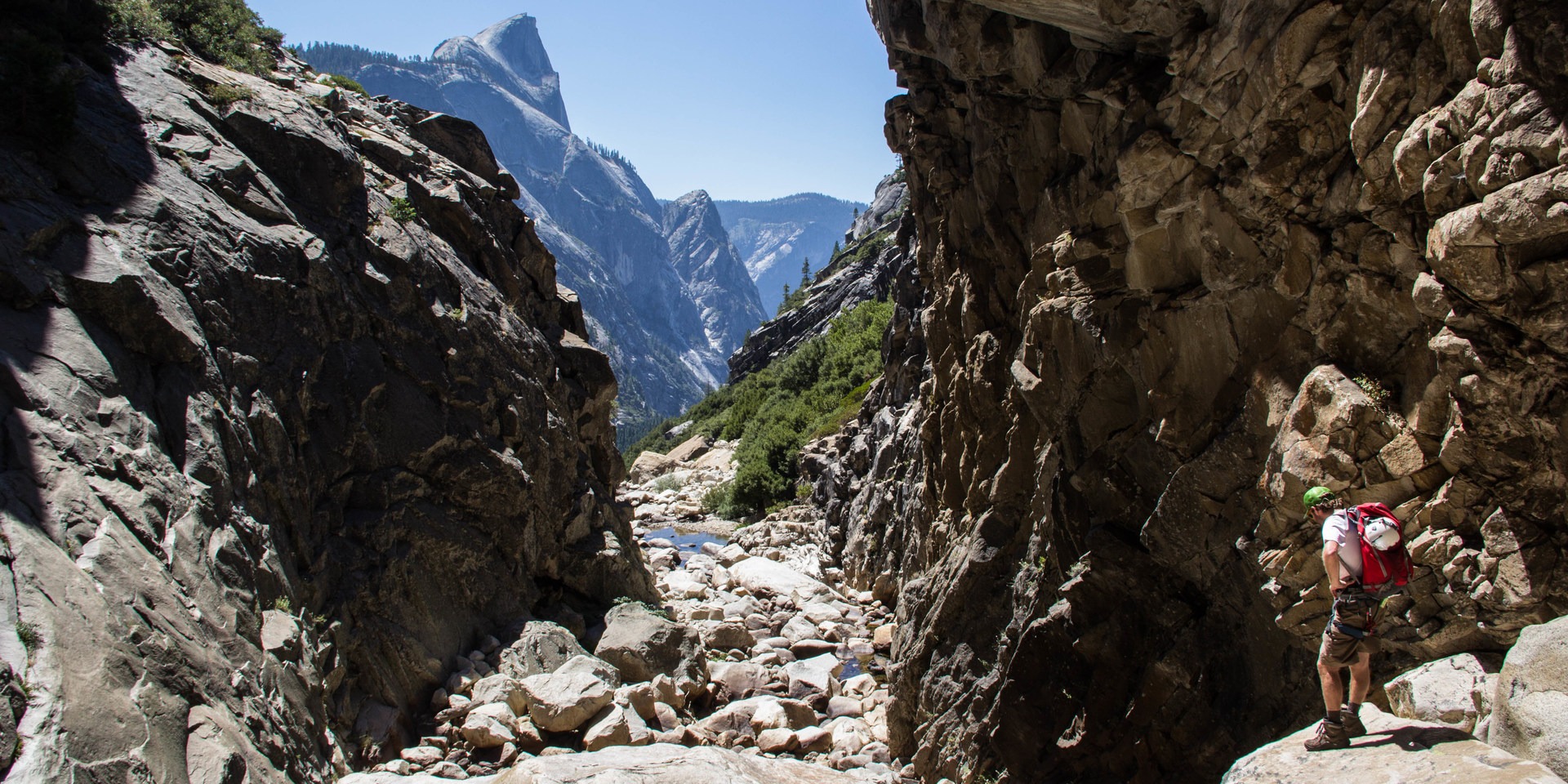
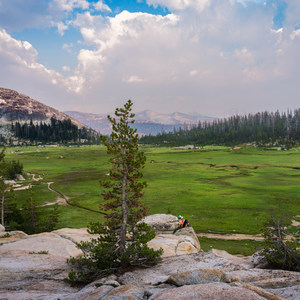

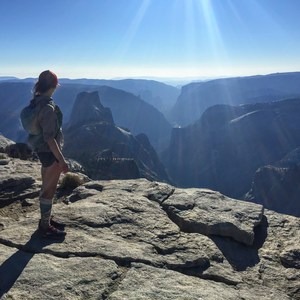
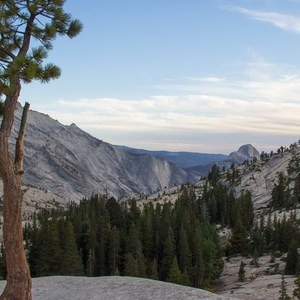
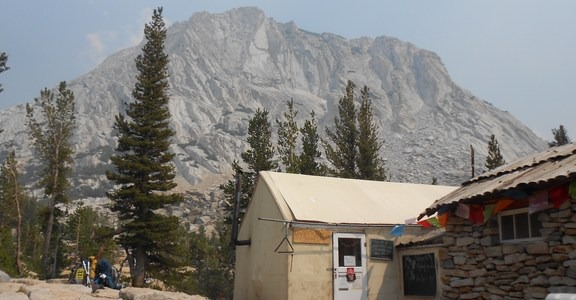
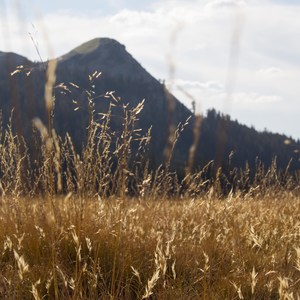



Comments
The reason I am posting is to let everyone know that my Samsung Galaxy s7 edge on AT&T network has worked the entire time.
Including in the CANYON! Phone, txt and GPS. All worked. GPS was very, very accurate as we pre-loaded key path-finding coordinates and phone's map was matching to the point.
Sign In and share them.